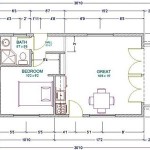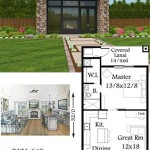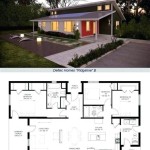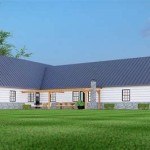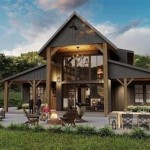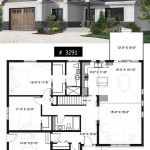3 Bedroom Split Level Floor Plans: A Comprehensive Guide
Split-level homes, popularized in the mid-20th century, offer a unique architectural style that maximizes space and creates distinct living zones. Their staggered floor design provides visual interest and inherent privacy, making them a compelling choice for families and individuals alike. This article delves into the specifics of 3-bedroom split-level floor plans, outlining their advantages, common layouts, design considerations, and potential challenges.
Advantages of Split-Level Designs
Split-level homes offer several benefits compared to traditional single-story or two-story homes. The staggered design inherently creates separation between living spaces, allowing for greater privacy between areas like the bedrooms and the common living areas. This separation also facilitates noise reduction, making them ideal for families with varying schedules or interests. Additionally, split-level homes often incorporate half-flights of stairs, which can be less strenuous than full flights, making them more accessible for some individuals.
Common 3-Bedroom Split-Level Layouts
Several common layouts exist for 3-bedroom split-level homes. One popular design features the main living areas, such as the living room, dining room, and kitchen, on the entry level. A half-flight of stairs leads up to the bedroom level, typically housing all three bedrooms and one or two bathrooms. Another half-flight down from the entry level leads to a lower level, which might contain a family room, recreation area, or additional bedrooms, and potentially a laundry room or garage access.
Another common layout places the master bedroom on the upper level with the other two bedrooms, creating a more private suite-like experience. A variation on this layout could include a split entry, where the front door opens onto a landing with stairs leading both up and down to different levels of the house. This allows for a more dramatic entrance and further separation between the different living zones.
Considerations for Choosing a Split-Level Plan
Several crucial factors warrant consideration when choosing a 3-bedroom split-level floor plan. The lot size and topography play a significant role, as split-level homes are often well-suited for sloped lots, allowing the house to blend seamlessly into the landscape. Lifestyle needs also factor into the decision-making process. Families with young children might prefer bedrooms clustered close together on the same level, while those with older children or multi-generational families might appreciate the increased privacy offered by separated bedroom levels.
Maximizing Space and Natural Light
One potential challenge with split-level homes is the efficient use of space, particularly in smaller footprints. Careful planning is essential to avoid cramped or awkwardly shaped rooms. Incorporating open-plan concepts within the individual levels can create a sense of spaciousness and improve flow. Maximizing natural light through strategically placed windows and skylights can further enhance the perception of space and create a brighter, more welcoming environment.
Exterior Design and Curb Appeal
The exterior design of a split-level home significantly impacts its curb appeal. Material choices, landscaping, and the overall architectural style all contribute to the home's aesthetic. Popular exterior materials include brick, siding, and stucco, often used in combination to create visual interest. Landscaping can be utilized to soften the lines of the house and integrate it with the surrounding environment. Careful consideration of these elements can create a visually appealing and welcoming exterior.
Adaptability and Future Modifications
One advantage of split-level homes is their adaptability. Future modifications and expansions are often possible, allowing homeowners to adjust the layout to suit their changing needs. Finishing unfinished basement spaces, adding a deck or patio, or even adding another level can significantly increase the living space and functionality of the home. However, careful planning and consultation with professionals are essential when considering any structural modifications.
Addressing Common Challenges
While split-level homes offer numerous advantages, they also present certain challenges. The numerous short staircases can be a concern for individuals with mobility issues. Heating and cooling can sometimes be less efficient due to the staggered levels, requiring zoned systems for optimal performance. Privacy between levels can be compromised if not adequately addressed through careful design and window placement.

Logan A Modern Three Bedroom Split Level House Plan 9535

Split Level House Floor Plans Designs Bi 1300 Sq Ft 3 Bedroom

3 Bedroom 2 Bath Split Ranch House Plan 1400 Sq Ft

242m2 4 Bedrooms 3 Split Level Floor Plan Bedroom Carport Plans Bed Home Pier And Beam House Metric Version

Split Foyer Plan 1678 Square Feet 3 Bedrooms 2 Bathrooms Alexis

Split Level House Plans Without Garage Drummondhouseplans Com

Ranch House Plan 3 Bedrms 5 Baths 2218 Sq Ft 141 1004

The Monterey Upward Sloping Block House Designs Mcdonald Jones Homes

3 Bed Split Level Home Plan 21047dr Architectural Designs House Plans

Our Best Modern Split Level House Plans Drummondhouseplans Com

